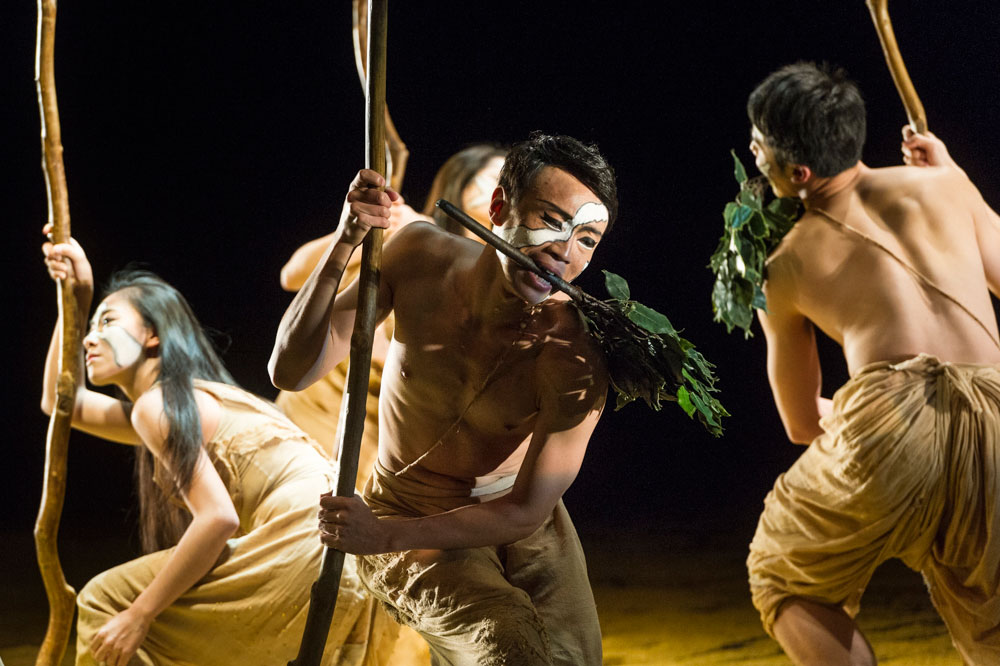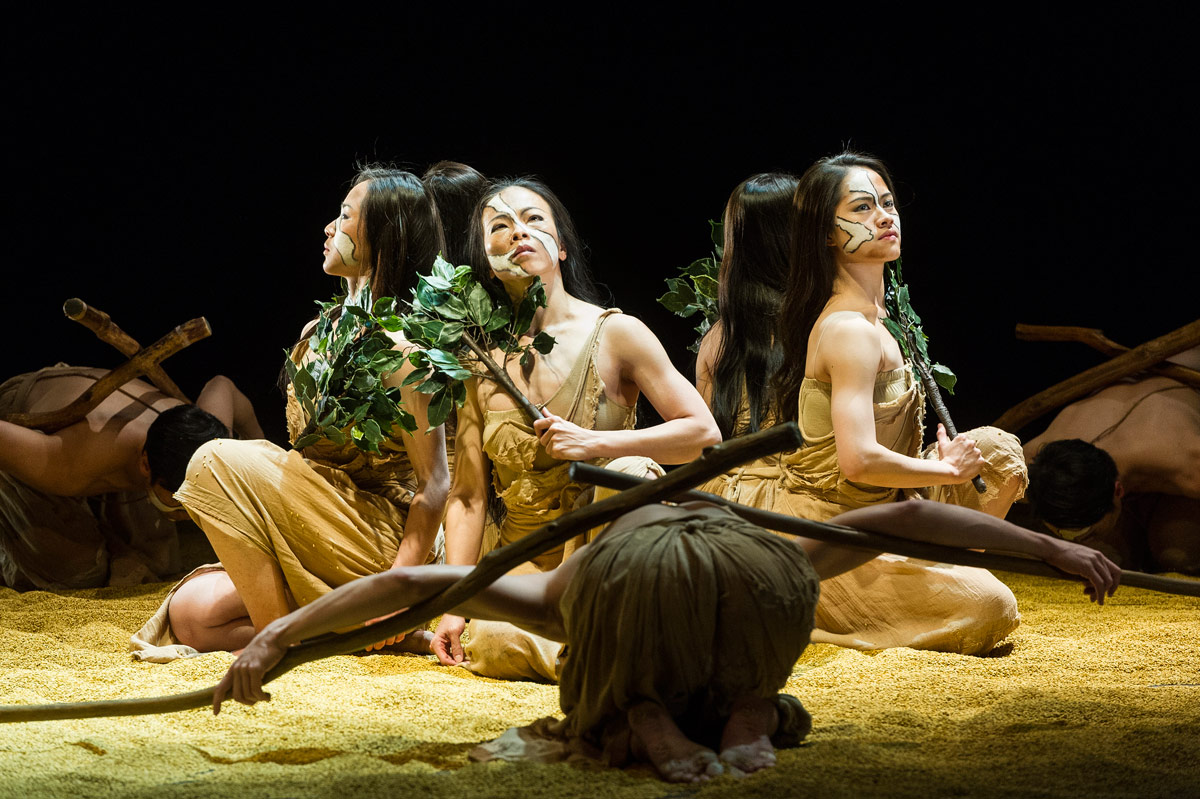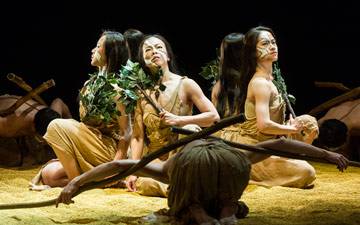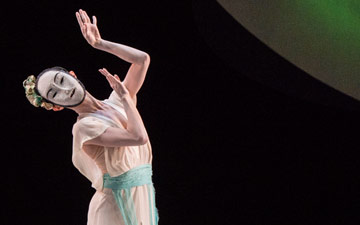
© Foteini Christofilopoulou. (Click image for larger version)
Cloud Gate Dance Theatre of Taiwan
Songs of the Wanderers
★★★★✰
London, Sadler’s Wells
5 May 2016
Gallery of pictures by Foteini Christofilopoulou
site.cloudgate.org.tw/eng/
www.sadlerswells.com
Three tons of golden rice grains are employed in Songs of the Wanderers. A slim stream of grain falls onto the figure of a shaven headed monk in a white robe who stands motionless at one side of the stage for the duration of the performance. The entire work is a kind of meditation, a slow ritual or pilgrimage for its cast across mounds of rice that could be mountains or rivers. Its ceremony and calm unhurried qualities aim for a serene and hypnotic effect. It has exquisitely beautiful moments but like pilgrims we have to earn our rewards over time. The performance lasts for an hour and a half without a break.
On this pilgrimage there are some elegantly composed visual images and gorgeous effects, but you will need patience to get the most out of Wanderers. It may be that this cool meditative vision is just the release needed after a fraught day at the office or you could find its repetitions and stately pacing a little wearing. The audience were absorbed and attentive, unwilling at the very end to break the spell. There even seemed to be substantially less coughing than usual.

© Foteini Christofilopoulou. (Click image for larger version)
Lin Hwai-Min, director of Cloud Gate, created this work back in 1994, basing it on ideas of religious practices across Asia, particularly the idea of pilgrimage in search of enlightenment. It is regarded as a signature work for the company which encapsulates many of their particular skills and qualities – the dancers train in meditation and martial arts as well as dance.
In the opening, men and women, all clutching long staffs, slowly advance across the stage towards piles of rice which they scoop up and let trickle through their hands. The women retreat to form a slow moving sculptural group at the back of the stage. They seem archaic and frieze like, and yet natural, with their arms tossed gently like seaweed underwater. One woman in a subsequent solo seemed possessed by some unquenchable grief. In another scene, men enter carrying bunches of twigs with which they beat themselves. Women join them and the twigs are ceremonially passed between them. We may not be party to the nature of ritual but the sense of commitment to the quest comes across strongly.
At times the steady hissing of the rice as it falls is the only sound. Most of the action is accompanied by recorded music from the Rustavi Choir performing Georgian folk songs. Sometimes the voices sound far distant, at other times more urgent and full throated. It works very well with the mood of the piece. The tinkling of the little bells attached to each pilgrim’s staff also plays its part.
More spectacular images occur towards the close. Bowls of fire are carried on and balanced on dancers’ heads. They are removed and then the dancers begin to spin on the spot like whirling dervishes. Rice falls in a great shower and then is hurled about with fierce energy. The lighting (by Chang Tsan-tao) picks this up beautifully, making the grains into golden fireworks exploding.

© Foteini Christofilopoulou. (Click image for larger version)
The work uses a cast of over twenty though Lin Hwai-Min seldom deploys all his forces at once, preferring a more concentrated effect. It’s an ensemble piece with few solos and all the cast have great focus and control. The women look particularly powerful and strong, never passive.
The ending is very distinctive. After the bows and the applause, when the cast has left the stage, a single dancer (who has previously appeared intermittently pushing a rake across the stage like a reminder of the grim reaper) slowly begins to rake the piles of rice into a perfect, neat golden spiral which finally extends across the whole width of the stage. This takes several minutes which pass in total silence. Nobody in the audience moved until it was done. It did seem a fitting end to something that was an act of meditation as much as a performance.

















You must be logged in to post a comment.